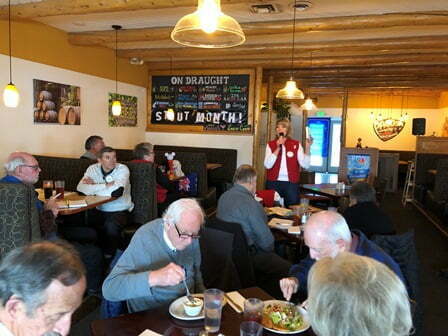In the overdue Nineteen Nineties, Public Health Advocates, a nonprofit organization promoting fitness fairness, started working to remove soda and junk food from California colleges. The food and beverage industries fought these reforms as colleges had become ground zero for constructing logo loyalty. Yet research confirmed an out-of-manage adolescence weight problems epidemic, with colleges turning into soda-and-junk-meals superstores. On the side of support from the mother and father and different stakeholders, this information increased assistance for public coverage reforms. After lengthy and contentious policy battles, California enacted statewide laws in 2001, 2003, and 2005 to eliminate soda and junk meals from colleges. Over the following five years, more than 20 states observed California’s lead with comparable rules.
 The tide had turned. In partnership with the Clinton Foundation, the three biggest soda manufacturers agreed to remove sugary liquids from faculties. They sold countrywide ads to have fun with their choice. Eventually, they got here to peer that shielding children’s health now not only turned politically expedient but also made true business experience. Twenty years later, those once exceptionally controversial policies are mainstream.
The tide had turned. In partnership with the Clinton Foundation, the three biggest soda manufacturers agreed to remove sugary liquids from faculties. They sold countrywide ads to have fun with their choice. Eventually, they got here to peer that shielding children’s health now not only turned politically expedient but also made true business experience. Twenty years later, those once exceptionally controversial policies are mainstream.
As public health recommendations for the past two decades, I have helped enact regulation at each kingdom and neighborhood level, promoting healthy eating and active living to mitigate the twin epidemics of obesity and diabetes. During this time, public fitness proponents and the meals and beverage industries have frequently treated one another as enemies. Public health advocates regularly accuse the meals and beverage industries of caring handiest about the bottom line. In contrast, the meals and beverage industries periodically consider advocates to be “the food police” and say that ingesting well is strictly counted as a personal obligation.
We have even though made development. Childhood weight problem prices have plateaued in a few groups, and there’s developing proof that public rules like those selling wholesome school meals have an actual impact. Still, diabetes and weight problems epidemics keep disproportionately harming low-income communities and communities of shade. Remarkably, more than 1/2 of US adults now have diabetes or prediabetes.
Finding not unusual floor among health advocates and the food and beverage industries can save lives and prevent persistent sickness throughout the kingdom. We should forge a new era of mutual advantage by pushing obstacles, changing expectancies, and wondering about the repute quo together.
Brand, image, and sales have constantly been the lifeblood of food and beverage groups. But nowadays, those businesses find themselves in a bind. As Pulitzer Prize-triumphing reporter Michael Moss describes in his pleasant-selling e-book, Salt Sugar Fat: How the Food Giants Hooked Us, excessive-calorie and processed meals are massive dealers because we’re biologically interested in them. Companies scientifically formulate and market merchandise that compels us to devour and drink them. By increasing the sugar content material of Yoplait yogurt, General Mills saw an income leap. Likewise, beverage enterprise formulators aim for the “bliss point”—the perfect quantity of sweetness that induces the finest cravings.
In Capitalism and Freedom, Nobel Prize-winning conservative economist Milton Friedman writes, “There is one and only one social responsibility of business … to boom its income.” Importantly, Friedman qualifies this oft-quoted assertion by adding, “See you later because it remains inside the regulations of the sport, which is to mention, engages in open and free competition without deception or fraud.” Perhaps one location where fitness advocates and the food and beverage industries can make paintings collectively is to ensure that purchasers have complete information about the goods they buy so they are neither misled nor deceived.










